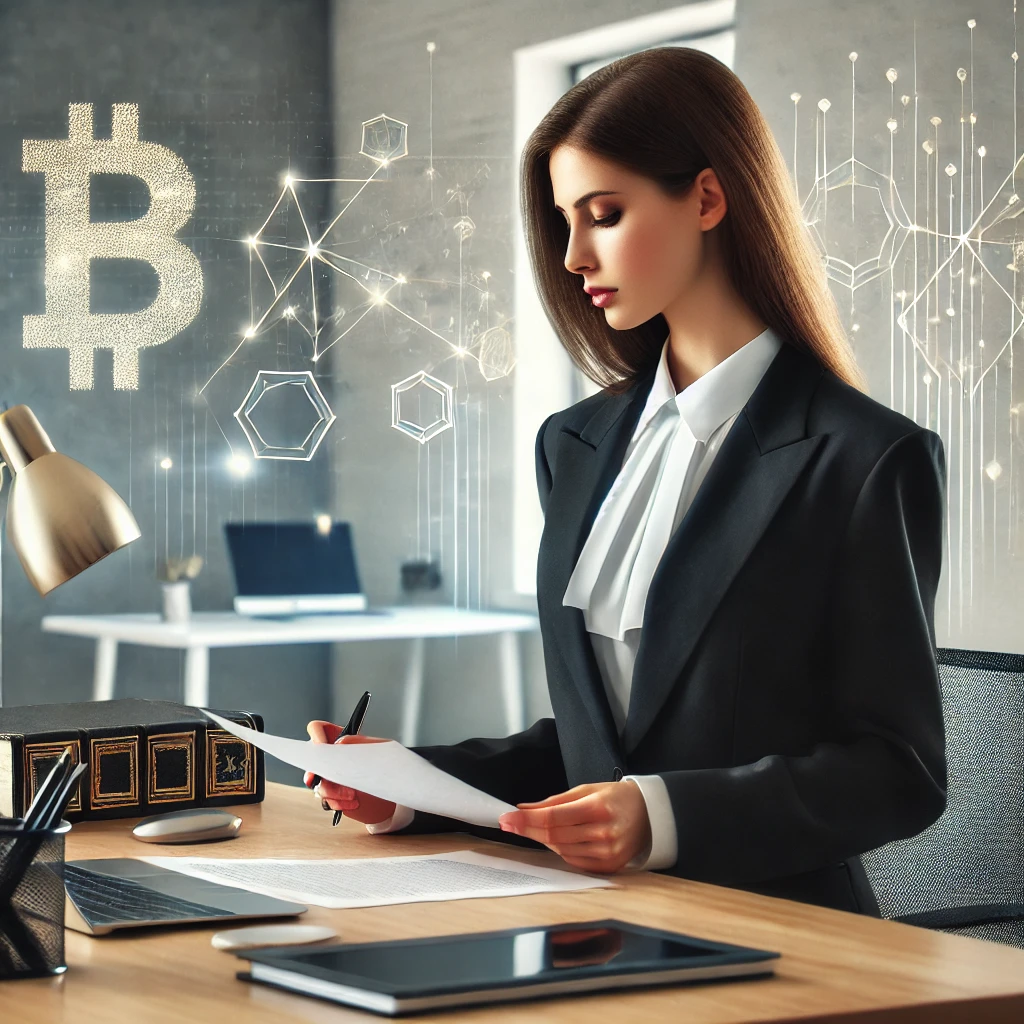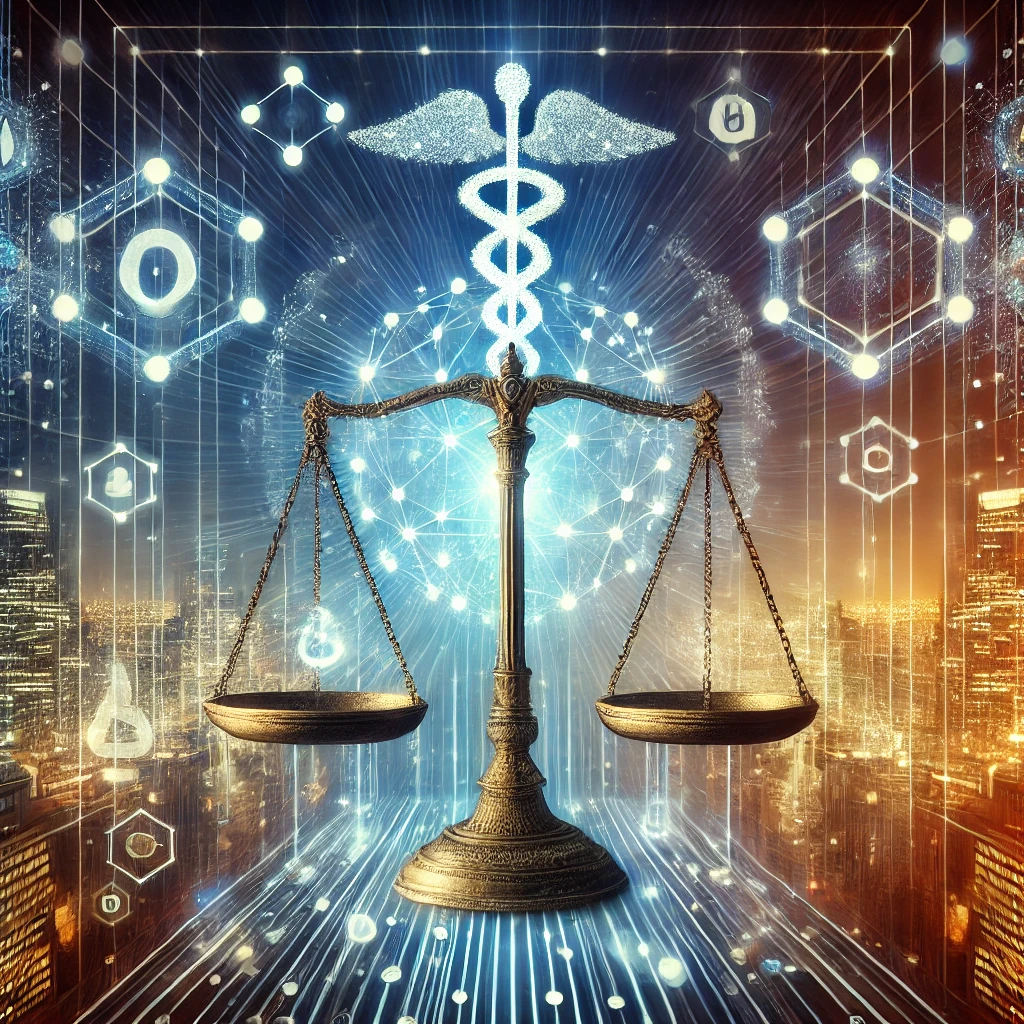Introduction

Lawyers who facilitate complex financial transactions now face a world where artificial intelligence (AI), blockchain-based platforms, and algorithmic decision-making are reshaping markets. No longer is it unthinkable that contracts might draft themselves, that due diligence might be performed by machine learning tools, or that “smart contracts” might execute asset transfers automatically upon specified events, leaving no room for human intervention. These innovations raise unsettling questions. As Professor Heather Hughes writes, “If AI models trained on existing deal documentation generate work-products for automated transactions, what kinds of effects and concerns should lawyers identify?”1
This question resonates profoundly in the context of financial markets. One of the most prominent examples is the multi-trillion-dollar market for asset-backed securities (ABS), which often relies on legal ambiguity and skilled lawyering to create value and manage risk.2 Securitization has long enabled companies to package receivables or other income-generating assets into “bankruptcy-remote” structures, thereby lowering the cost of capital. Lawyers, in turn, draft deal documents, issue complex opinion letters, and help ensure compliance with a patchwork of state and federal regulations. Yet these same transactions often hinge on subtle legal uncertainties—ambiguities that can become fault lines if an originator defaults and stakeholders dispute who truly owns the underlying assets.
The rise of blockchain-based “tokenization,” a form of automated issuance that parallels securitization, threatens to lock in certain outcomes without the traditional human intervention points. As Hughes notes, “Automated platforms can alter the consequences of deliberate legal ambiguity … and as such can affect risks associated with asset-backed issuances.”3In short, the move toward “driverless” finance—where algorithms run the show—compels deal lawyers to re-examine their role and ethics, asking: if machines take over the mechanical tasks, what is the enduring value of human lawyers?
I. The “Lost Lawyer” and the Rise of Robot Lawyering
 Anthony Kronman’s The Lost Lawyer lamented the decline of the lawyer-statesman—an ideal of a professional steeped not only in technical skill but also in public-spirited wisdom.4 Kronman’s critique predates the current era of legal automation, yet it anticipated a profession unmoored from service to the broader public good. Today, emerging technology intensifies this concern. As Richard Susskind puts it, with rapid AI advancement, “it is not just reasonable, it is vital that we ask whether people or systems will be doing our legal work in decades to come.”5
Anthony Kronman’s The Lost Lawyer lamented the decline of the lawyer-statesman—an ideal of a professional steeped not only in technical skill but also in public-spirited wisdom.4 Kronman’s critique predates the current era of legal automation, yet it anticipated a profession unmoored from service to the broader public good. Today, emerging technology intensifies this concern. As Richard Susskind puts it, with rapid AI advancement, “it is not just reasonable, it is vital that we ask whether people or systems will be doing our legal work in decades to come.”5
Digital legal services platforms, “robot judges,” and predictive analytics promise efficiencies in the delivery of legal services. Yet they challenge the profession’s regulatory structure and ethical commitments. The American Bar Association’s Model Rules presume that lawyers are human beings who exercise independent judgment.6 Unauthorized practice rules restrict who may offer legal services, but such rules face pressure as technology encroaches on tasks once reserved for licensed attorneys. Prior litigation against automated legal service platforms like LegalZoom demonstrates these tensions.7
Automation also threatens to reduce the lawyer’s role in business transactions. For decades, the profession has struggled to articulate what unique value business lawyers add—beyond drafting documents. Ronald Gilson famously described them as “transaction cost engineers” who reduce uncertainty and facilitate deals.8 Others, like George Dent, depict them as “enterprise architects,” shaping governance and strategy.9 Whichever theory prevails, both assume human judgment and creativity. If an algorithm can draft documents, manage compliance, and even anticipate disputes, where do human lawyers fit?
II. Legal Ambiguity as a Source of Value

In commercial finance, lawyers often deploy legal ambiguity to generate wealth and flexibility. Consider asset securitization. Originators bundle receivables and sell them to a special purpose vehicle (SPV), which issues securities backed by those assets. By structuring the deal as a “true sale,” the SPV’s assets become bankruptcy remote, promising investors priority in any insolvency scenario. Yet the boundary between a “true sale” and a mere secured loan can be blurry. As Hughes notes, “[t]he true-sale doctrine … is the holy grail of the securitization market.”10
Such purposeful ambiguity—where deal documents can be read as supporting either a sale or a secured loan—creates value. Investors receive better pricing and lower risk; originators access cheaper capital. But if the issuer enters bankruptcy, stakeholders may challenge the transaction’s characterization. Courts then undertake fact-specific inquiries, weighing economic substance over form to determine whether investors or other creditors have superior claims to the assets.11 This human intervention point—where a judge reviews the transaction’s economic substance—is essential. It ensures that markets grounded in ambiguous structures do not devolve into unfair or systemically risky outcomes.
III. Legal Distortion and Systemic Risk

Problems arise when entire markets become too reliant on a particular deal type, prompting lawmakers or courts to “distort” legal doctrines to preserve financial stability. Steven Schwarcz has described “legal distortion” as the result of lawmakers contorting basic legal concepts to uphold market expectations.12 One notorious example is the repo market, where, prior to the 2007–08 crisis, so-called sales were functionally secured loans. Courts and regulators were reluctant to re-characterize these transactions lest they destabilize an enormous market integral to short-term liquidity.13
Distortion cements legal ambiguity into law, stripping away the corrective potential of judicial re-examination. This outcome is dangerous enough in a world where human lawyers and judges still have the final say. In a fully automated setting, it could be catastrophic. If blockchain-based smart contracts self-execute repos or securitizations without pause, we might lose the human inflection points where re-characterization and fairness adjustments occur. The automation of legal distortion could lock in structural disadvantages for weaker stakeholders, such as employees or trade creditors, and potentially amplify systemic risks.
IV. Tokenization and the Risks of Automation

Hughes contrasts traditional securitization with “tokenization,” i.e., blockchain-based issuances of digitized rights to real-world assets (RWAs). In a tokenized environment, terms can be encoded on a distributed ledger, and events like default can trigger automatic transfers of assets to investors.14 While this might seem efficient, it eliminates the space for human intervention that historically allowed courts or regulators to re-examine ambiguous claims. As Hughes explains, “Automated platforms can alter the consequences of deliberate legal ambiguity, and as such can affect risks associated with asset-backed issuances.”15
Consider a scenario where a company defaults. Under traditional securitization, the bankruptcy court could pause investor claims, question the characterization of the deal, and potentially allow for a fair distribution of resources to all creditors. In a tokenized setting, the smart contract could instantly send assets to investors, bypassing the automatic stay and forcing employees, suppliers, and other unsecured creditors into a costly remedial posture, trying to claw back assets already transferred.16 The very point at which human lawyers matter most—when markets and deals fail—could vanish.
V. Preserving Human Judgment and Ethical Stewardship

These developments raise fundamental questions about lawyers’ ethical obligations. Historically, the Model Rules of Professional Conduct focus on preventing fraud or crime, not on ensuring that financially complex structures do not externalize hidden risks onto unwitting stakeholders.17 In the wake of corporate scandals like Enron and AIG, scholars questioned whether business lawyers owe duties to the public. John C. Coffee, Jr. criticized bar associations for weak standards on third-party opinions, and Steven Schwarcz asked whether lawyers have responsibilities to prevent “financial information failure.”18
After the 2007–08 crisis, policymakers again demanded accountability. Yet, as Hughes notes, “the scrutiny subsided … with little to no change to lawyers’ practices.”19 Now, automation calls these issues back to the fore. If deal lawyers accept automated tools without critical evaluation, they risk allowing technology to hardwire legal distortion and hidden leverage into markets. If, however, they see themselves as guardians of the legal architecture underlying markets, they might incorporate codes of conduct and best practices that ensure some level of human review. Lawyers could, for example, design automated compliance systems that refuse to execute certain transfers until a human lawyer confirms legal status, or code conditions that respect the automatic stay in bankruptcy.
VI. A New Path Forward: Lawyers as Stewards of the Automated Market

None of this suggests that lawyers must reject technology. Rather, they should shape its evolution. If AI can expedite drafting, lawyers can devote more time to substantive judgment calls. If blockchain-based systems can ensure securities law compliance, lawyers can integrate private-law doctrines that preserve fairness and allow revisiting transactions in emergencies. Lawyers’ closing opinions, now often dense and heavily qualified, could evolve into robust, code-linked mechanisms that ensure critical legal checks remain intact before assets transfer.
As Hughes concludes, lawyers “have the capacity to understand and explain these dynamics.”20 By acknowledging both the opportunities and the risks posed by automation, deal lawyers can reclaim a statesman-like role, guiding businesses and markets through the technological revolution while preserving core legal values. This vision elevates lawyers beyond mere “deal technicians” to genuine stewards of the legal-financial nexus, ensuring that automation does not become a vehicle for entrenching unfairness or systemic fragility.
Conclusion

As financial activities move onto automated platforms, human lawyers remain indispensable, not as scriveners of boilerplate clauses, but as sentinels of legal principles and public welfare. In “driverless” finance, deal lawyers can ensure that automation respects deeply rooted legal doctrines, that markets do not lose essential intervention points, and that technological efficiency never fully supplants human judgment and moral responsibility.
In this uncertain future, lawyers have a crucial choice: cede their role to algorithms or assert their unique human expertise—shaped by judgment, ethics, and historical understanding of the law’s purpose. The value of deal lawyers endures when they help markets remain grounded in legal order and fairness, protecting not only their clients but the integrity of the financial system itself.
Selected References:
- Heather Hughes, Robots, Markets, and the Value of Deal Lawyers, 49 J. Corp. L. 833 (2024).
- Anthony T. Kronman, The Lost Lawyer: Failing Ideals of the Legal Profession (1993).
- Richard Susskind, Tomorrow’s Lawyers (2d ed. 2017).
- Ronald J. Gilson, Value Creation by Business Lawyers: Legal Skills and Asset Pricing, 94 Yale L.J. 239 (1984).
- George W. Dent, Jr., Business Lawyers as Enterprise Architects, 64 Bus. Law. 279 (2009).
- Steven L. Schwarcz, Distorting Legal Principles, 35 J. Corp. L. 697 (2010).
- John C. Coffee, Jr., Can Lawyers Wear Blinders? Gatekeepers and Third-Party Opinions, 84 Tex. L. Rev. 59 (2005).
Footnotes:
- Heather Hughes, Robots, Markets, and the Value of Deal Lawyers, 49 J. Corp. L. 833, 833 (2024).
- Id. at 834.
- Id. at 836.
- Anthony T. Kronman, The Lost Lawyer: Failing Ideals of the Legal Profession 2–3 (1993).
- Richard Susskind, Tomorrow’s Lawyers 187 (2d ed. 2017).
- Model Rules of Pro. Conduct r. 1.1 & cmt. 8 (Am. Bar Ass’n 2019).
- See, e.g., LegalZoom.com, Inc. v. N. Carolina State Bar, No. 11 CVS 15111, 2014 WL 1213242 (N.C. Super. Ct. Mar. 24, 2014).
- Ronald J. Gilson, Value Creation by Business Lawyers: Legal Skills and Asset Pricing, 94 Yale L.J. 239, 246 (1984).
- George W. Dent, Jr., Business Lawyers as Enterprise Architects, 64 Bus. Law. 279, 281 (2009).
- Hughes, supra note 1, at 876 (citing Peter V. Pantaleo et al., Rethinking the Role of Recourse in the Sale of Financial Assets, 52 Bus. Law. 159 (1996)).
- See In re LTV Steel Co., 274 B.R. 278, 285 (Bankr. N.D. Ohio 2001).
- Steven L. Schwarcz, Distorting Legal Principles, 35 J. Corp. L. 697, 698 (2010).
- In re Am. Home Mortg. Holdings, Inc., 388 B.R. 69, 77–78 (Bankr. D. Del. 2008).
- Hughes, supra note 1, at 836–37.
- Id. at 836.
- See Wietecha, The Impending Collision of Smart Contracts and the Automatic Stay, 97 Notre Dame L. Rev. 1351 (2022).
- Model Rules of Pro. Conduct r. 1.2 (Am. Bar Ass’n 2019).
- John C. Coffee, Jr., Can Lawyers Wear Blinders? Gatekeepers and Third-Party Opinions, 84 Tex. L. Rev. 59 (2005); Steven L. Schwarcz, Financial Information Failure and Lawyer Responsibility, 31 J. Corp. L. 1097, 1103 (2006).
- Hughes, supra note 1, at 839.
- Id. at 837.


